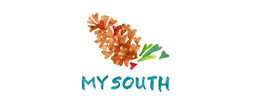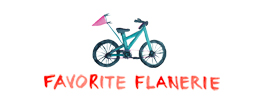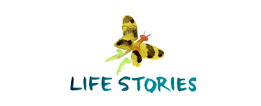During this first year of Small Pond Graphics, I’ve really seen a lot of exposure and new business opportunities sparked through my profiles on both Twitter and Facebook. I’ve been experimenting over the last few months with different ways of sharing client projects, original content, inspiration and ideas there and integrating the content here on Plop! as well. There’s no question social media takes time, and as with any marketing effort, for it to effective it takes some planning and thought as well. Today I thought I would share a couple of tools I use to help me with the logistics. Time spent on social media can get away from you if you’re not careful, and it can quickly turn non-productive. I use these tools for scheduling and managing the content I want to share–and for keeping my time on social media sane. Maybe they’ll help you as well.
 1. Twaitter.com — Twaitter is a marketing tool for Twitter that allows you to draft, schedule and send tweets. You don’t need a separate account, you just log in with your Twitter username and password. Simple enough. There are many twitter tools that facilitate the process of scheduling and sending tweets. The reason I like Twaitter is because I can schedule recurring tweets on a very specific time frame. While I don’t recommend bombarding your Twitter followers with repeated messages, I do think it’s valuable to send regular tweets with general information about your business. I use Twaitter to send a weekly tweet listing my services with a link to the Pond website and weekly tweets inviting followers to join my facebook page (with a link).
1. Twaitter.com — Twaitter is a marketing tool for Twitter that allows you to draft, schedule and send tweets. You don’t need a separate account, you just log in with your Twitter username and password. Simple enough. There are many twitter tools that facilitate the process of scheduling and sending tweets. The reason I like Twaitter is because I can schedule recurring tweets on a very specific time frame. While I don’t recommend bombarding your Twitter followers with repeated messages, I do think it’s valuable to send regular tweets with general information about your business. I use Twaitter to send a weekly tweet listing my services with a link to the Pond website and weekly tweets inviting followers to join my facebook page (with a link).
 2. Postling.com — Postling is a great comprehensive service for posting to multiple social media channels or blogs at one time. It also allows you to manage multiple brands if you have more than one business on your social media plate, and it allows you to schedule in advance. I frequently use it to schedule the Daily PONDspiration posts I add to the Small Pond Facebook page each day. I like it because you can select to post to both your personal FB profile and any pages you administer and Twitter. It automatically shortens the links for my posts and I like it because it allows me to choose an image from the linked page to include, much like if I was posting it directly into Facebook. That’s important to me because my posts are design oriented. I usually spend some time over each weekend scheduling the upcoming week’s daily FB posts all at once. Makes my life easier!
2. Postling.com — Postling is a great comprehensive service for posting to multiple social media channels or blogs at one time. It also allows you to manage multiple brands if you have more than one business on your social media plate, and it allows you to schedule in advance. I frequently use it to schedule the Daily PONDspiration posts I add to the Small Pond Facebook page each day. I like it because you can select to post to both your personal FB profile and any pages you administer and Twitter. It automatically shortens the links for my posts and I like it because it allows me to choose an image from the linked page to include, much like if I was posting it directly into Facebook. That’s important to me because my posts are design oriented. I usually spend some time over each weekend scheduling the upcoming week’s daily FB posts all at once. Makes my life easier!
Note: Postling also tracks comments and interactions with your social media posts. Nice.
 3. Amplify.com — Amplify offers a very similar service to Postling with a few added features I love. Like Postling, it allows you to choose multiple profiles and media outlets to post a single message. But, Amplify offers an easy browser toolbar button that lets you “amplify” a link right from your browser. I use it to share links or information on Twitter or Facebook on the fly without a lot of additional browser windows or logins. If I want more control over what is shared, I also sometimes use it to schedule Daily PONDspiration posts. The toolbar button offers the option to “clip” a page. I can select an image and various paragraphs of text straight from a web page. [It’s very helpful for those webpages whose images won’t automatically import into Facebook.] Another great feature of Amplify is that it lets you compose your Twitter and Facebook wording separately since you can utilize more characters on Facebook.
3. Amplify.com — Amplify offers a very similar service to Postling with a few added features I love. Like Postling, it allows you to choose multiple profiles and media outlets to post a single message. But, Amplify offers an easy browser toolbar button that lets you “amplify” a link right from your browser. I use it to share links or information on Twitter or Facebook on the fly without a lot of additional browser windows or logins. If I want more control over what is shared, I also sometimes use it to schedule Daily PONDspiration posts. The toolbar button offers the option to “clip” a page. I can select an image and various paragraphs of text straight from a web page. [It’s very helpful for those webpages whose images won’t automatically import into Facebook.] Another great feature of Amplify is that it lets you compose your Twitter and Facebook wording separately since you can utilize more characters on Facebook.
Note: Amplify sets up your amplified posts as a micro-blog of sorts that you can promote if you desire. When posting, you can link to this micro-blog or to the original web page you are sharing.
 4. Network Blogs — I wanted to throw in a tool I use for Plop! as well. Network Blogs is a Facebook application that lets you link your blog content to your Facebook page and/or profile. You can essentially set up a mini page for your blog and manage how it is “syndicated” to your FB profile or any pages you administer. The application creates a “blog” tab showing all your posts, and it can automatically post links for new blog posts to your wall. I also activated the feature that lets you post to Twitter automatically as well.
4. Network Blogs — I wanted to throw in a tool I use for Plop! as well. Network Blogs is a Facebook application that lets you link your blog content to your Facebook page and/or profile. You can essentially set up a mini page for your blog and manage how it is “syndicated” to your FB profile or any pages you administer. The application creates a “blog” tab showing all your posts, and it can automatically post links for new blog posts to your wall. I also activated the feature that lets you post to Twitter automatically as well.
Of course, some of the services these tools offer overlap. I’ve established sort of a mish-mash protocol for how I prefer to manage my social media marketing. These free services may offer you the opportunity to do the same!

 Hello & welcome! I’m Haley Montgomery, and I’m the designer and owner of
Hello & welcome! I’m Haley Montgomery, and I’m the designer and owner of 















